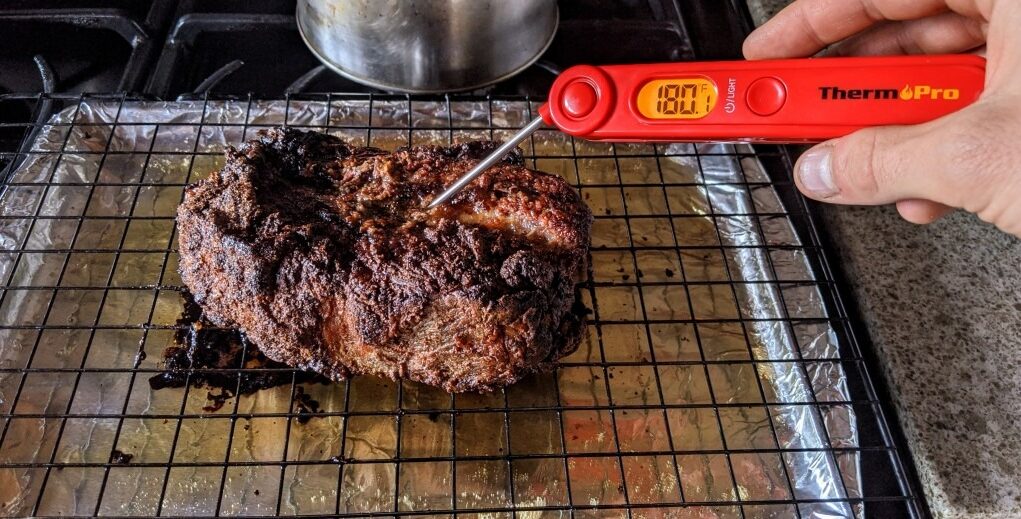When it comes to cooking, two essential tools often used in the kitchen are the candy thermometer and the meat thermometer. While they might seem similar at first glance, these instruments serve very distinct purposes. So, how is a candy thermometer different from a meat thermometer?
Whether you are a beginner cook or a seasoned chef, understanding the differences between these two thermometers can significantly improve your cooking and baking outcomes.

What is a Candy Thermometer?
A candy thermometer is a specialized tool used to measure the temperature of sugar solutions or cooking oil. These thermometers can read up to very high temperatures, typically ranging from 100F to 400F. They are especially useful in making candies, caramels, and deep-fried foods.
Features of a Candy Thermometer
- High Temperature Range: Can measure temperatures from 100F to 400F.
- Precision: Designed to measure precise temperatures necessary for candy making.
- Structure: Often long and narrow, with markings for different stages of candy making, such as soft ball or hard crack.

What is a Meat Thermometer?
A meat thermometer is designed to measure the internal temperature of meats. It ensures that the meat is cooked to the desired level of doneness, which is crucial for both flavor and safety. The temperature range for meat thermometers is generally lower than that of candy thermometers, usually between 100F and 200F.
Features of a Meat Thermometer
- Moderate Temperature Range: Typically ranges from 100F to 200F.
- Instant Read: Provides quick temperature readings.
- Structure: Shorter and thicker probe designed to penetrate meat.

Key Differences Between Candy and Meat Thermometers
Understanding the differences between these two types of thermometers can help you avoid kitchen mishaps and improve your culinary skills.
Temperature Range
The most significant difference lies in their temperature ranges. A candy thermometer can measure up to 400F, making it suitable for high-heat applications like candy making and deep-frying. In contrast, a meat thermometer is designed for lower temperature ranges, suitable for ensuring meat is properly cooked.
Design and Structure
Candy thermometers are often long and narrow, making them perfect for deep pots of boiling sugar or oil. On the other hand, meat thermometers are shorter and thicker, ideal for inserting into cuts of meat.
Usage
Another distinct difference is in how these thermometers are used. Candy thermometers are designed to clip onto a pot’s side and measure the temperature of liquids, whereas meat thermometers are inserted into the thickest part of the meat to check for doneness.
How to Properly Use a Candy Thermometer
Step-by-Step Guide
Follow these steps to effectively use a candy thermometer:
- Clip the thermometer to the side of your pot.
- Ensure the bulb is fully submerged in the sugar solution or oil.
- Wait until the thermometer reaches the desired temperature.
- Remove the pot from heat once the target temperature is achieved.
How to Properly Use a Meat Thermometer
Step-by-Step Guide
Using a meat thermometer correctly can ensure that your meat is perfectly cooked:
- Insert the thermometer into the thickest part of the meat.
- Avoid touching bone, fat, or gristle.
- Wait for the thermometer to give a steady reading.
- Remove the meat once the desired internal temperature is reached.
Pros and Cons of Candy Thermometer
Advantages
- High-temperature range
- Precision in candy making
- Multiple stages marked for different candies
Disadvantages
- Not suitable for meat
- Can be fragile
Pros and Cons of Meat Thermometer
Advantages
- Quick readings
- Ensures meat safety
- Easy to use
Disadvantages
- Limited temperature range
- Not suitable for candy making
Digital vs. Analog Thermometers
Both candy and meat thermometers come in digital and analog forms. Digital thermometers offer faster and more accurate readings, but analog thermometers are often more affordable and don’t require batteries.
Conclusion
Understanding the differences between a candy thermometer and a meat thermometer can elevate your culinary skills. Knowing when and how to use each tool will ensure your dishes are both safe and delicious. Whether you’re deep-frying, making candy, or cooking a perfect roast, having the right thermometer can make a tremendous difference.
Frequently Asked Questions
Can I use a candy thermometer for meat and vice versa?
While it might be tempting, it’s recommended to use each thermometer for its intended purpose due to the differences in temperature ranges and design.
Why is my candy thermometer not accurate?
Numerous factors can affect the accuracy of a candy thermometer, including calibration and placement. Ensure that the thermometer is properly calibrated and fully submerged in the solution.
What are the stages marked on a candy thermometer?
Candy thermometers often have stages such as soft ball, firm ball, hard ball, soft crack, and hard crack, which correspond to different temperatures for various candy recipes.
For a practical guide on how to use a meat thermometer, please visit this article.
As an Amazon Associate, I earn from qualifying purchases.






